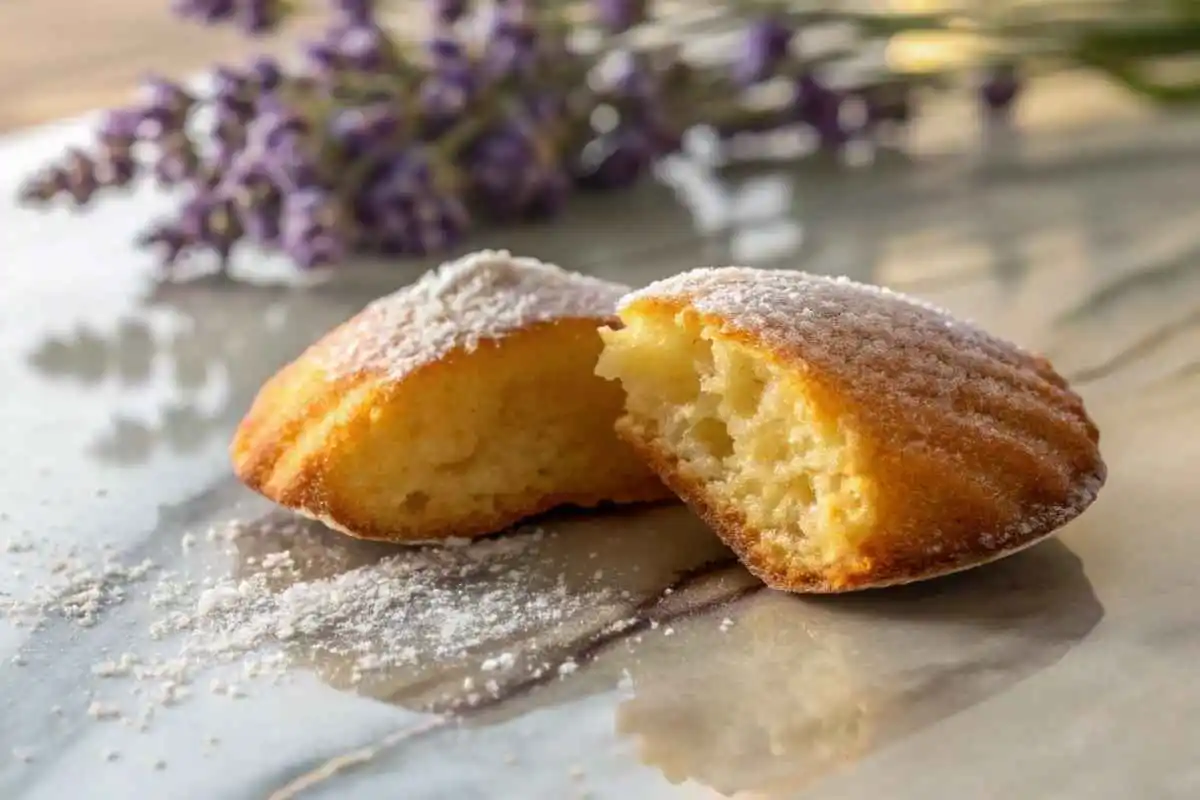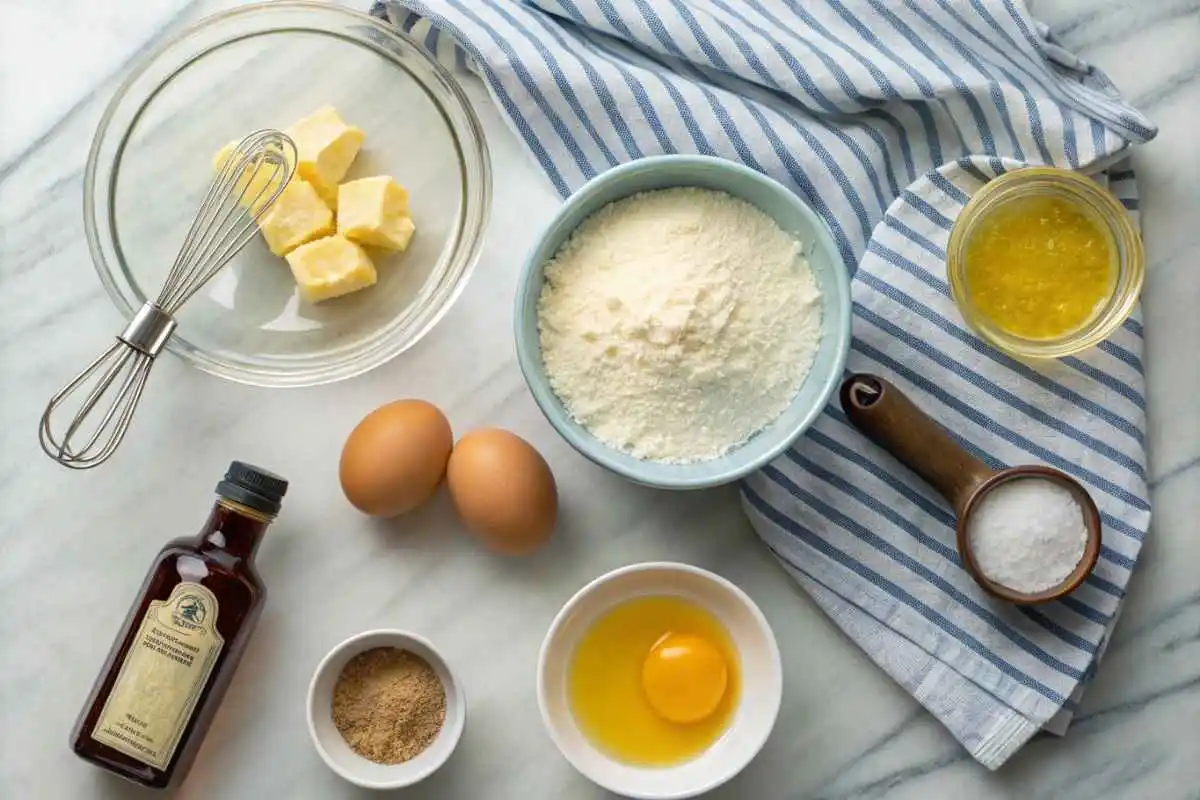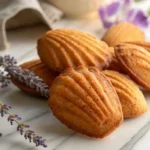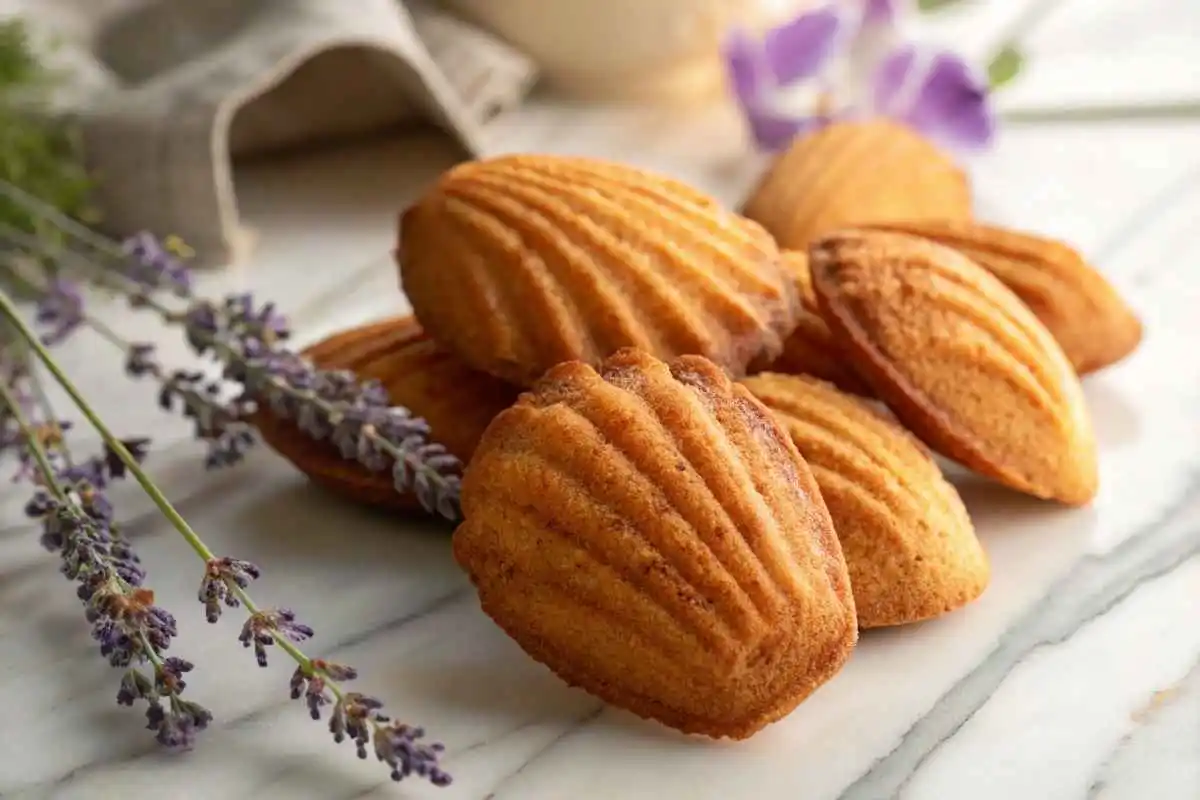Baking enthusiasts know there’s something magical about a perfectly crafted Madeline cookie—light, buttery, and delicately crisp on the edges. But what if you could elevate this classic French treat with a rich, creamy twist? In this guide, we’ll explore a standout approach: a madeline cookies recipe using cream. This method promises a tender crumb and a luxurious flavor that’s sure to impress. Whether you’re a seasoned baker or just starting out, this article will walk you through every step, from understanding the role of cream to troubleshooting common baking pitfalls. Ready to create a batch of unforgettable Madelines? Let’s get started.

Why Choose a Madeline Cookies Recipe Using Cream?
Madeline cookies, with their iconic shell shape and subtle sweetness, have been a staple in French patisseries for centuries. Traditionally made with butter, sugar, eggs, and flour, they’re delightful on their own. So why tweak a classic with cream? The answer lies in texture and taste.
Cream introduces a velvety richness that transforms the cookie’s interior into something softer and more indulgent. Unlike recipes relying solely on butter, a madeline cookies recipe using cream balances moisture and fat, resulting in a melt-in-your-mouth experience. Plus, it adds a hint of sophistication that pairs beautifully with tea or coffee.
This approach isn’t just about flavor—it’s also about versatility. Cream allows you to experiment with infusions like vanilla or citrus, taking your Madelines to the next level. Curious about how cream changes the game? Keep reading to uncover the science and steps behind this delicious twist.
The Science Behind a Madeline Cookies Recipe Using Cream
Baking is as much chemistry as it is art, and cream plays a starring role in this equation. Cream, typically containing 30–40% fat, acts as a tenderizing agent in dough. According to the USDA, heavy cream’s fat content contributes to a softer texture by coating flour proteins, reducing gluten formation. This means your Madelines won’t turn out tough or chewy—common issues in overworked batters.
Moreover, cream’s water content adds moisture, which evaporates during baking to create those signature airy pockets inside the cookie. The result? A delicate balance of crisp edges and a plush center. When you opt for a madeline cookies recipe using cream, you’re leveraging this science to achieve bakery-quality results at home.
But it’s not just about texture. Cream enhances flavor by amplifying the buttery notes already present in the recipe. It’s a small tweak with a big payoff, making every bite feel like a treat.
Tips for Perfecting Your Madeline Cookies Recipe Using Cream
Ready to bake? Before you preheat the oven, let’s cover some pro tips to ensure your Madelines turn out flawless. These pointers will help you avoid common mistakes and maximize the benefits of using cream.
First, chill your batter. After mixing, let it rest in the fridge for at least an hour. This step, backed by baking experts at King Arthur Baking, allows the flour to hydrate fully and the fat in the cream to solidify, leading to that iconic hump on your Madelines. Don’t skip it!
Second, don’t overmix. Once you add the cream, gently fold it into the batter. Overworking activates gluten, which can ruin the tender texture you’re aiming for. A light hand is key.
Finally, use a well-greased Madeline pan. Cream adds extra moisture, which can make the cookies stick if the pan isn’t prepared properly. A quick brush of melted butter or a spritz of nonstick spray will save you from frustration.
With these tips in mind, you’re ready to tackle the process. Let’s break it down step by step.
Step-by-Step Guide to a Madeline Cookies Recipe Using Cream

Baking Madelines might seem intimidating, but this method is straightforward and rewarding. Follow these steps, and you’ll have a tray of golden, cream-infused cookies in no time.
Step 1: Gather Your Tools and Prep
Start with the right equipment: a Madeline pan, mixing bowls, a whisk or electric mixer, and a spatula. Preheat your oven to 350°F (175°C) and grease your pan generously. Preparation is half the battle, so don’t rush this part.
Step 2: Mix the Wet Ingredients
In a large bowl, whisk together eggs and sugar until pale and frothy—about 2–3 minutes. This incorporates air, which helps with the cookies’ rise. Next, gently stir in the cream and melted butter. The cream should be at room temperature to blend smoothly without curdling.
Step 3: Combine Dry Ingredients
In a separate bowl, sift flour, baking powder, and a pinch of salt. Sifting prevents clumps and ensures an even texture. Gradually fold these dry ingredients into the wet mixture. Remember: don’t overmix!
Step 4: Chill and Fill
Spoon the batter into a piping bag (or use a spoon) and refrigerate it for 1–2 hours. Once chilled, pipe or scoop the batter into the prepared Madeline pan, filling each mold about three-quarters full. This prevents overflow while allowing room for that classic hump.
Step 5: Bake and Cool
Bake for 10–12 minutes, or until the edges are golden and the centers spring back when lightly pressed. Let the cookies cool in the pan for 5 minutes before transferring them to a wire rack. Patience here ensures they release cleanly.
That’s it! You’ve just mastered a madeline cookies recipe using cream. But what if things don’t go as planned? Let’s troubleshoot.
Troubleshooting Your Madeline Cookies Recipe Using Cream
Even the best bakers hit snags. Here’s how to fix common issues when using cream in your Madelines.
Problem: No Hump
If your Madelines lack that signature bump, the batter might not have rested long enough. The cold cream and butter need time to firm up, so don’t skip the chilling step. Oven temperature also matters—too low, and the cookies won’t rise properly. Double-check with an oven thermometer.
Problem: Sticky Cookies
Cream adds moisture, which can make Madelines cling to the pan. Ensure your pan is well-greased, and consider dusting it lightly with flour for extra insurance. Let them cool slightly before removing them, too.
Problem: Dense Texture
A heavy hand with mixing could be the culprit. Fold ingredients gently to preserve airiness. If the cream was too cold, it might not have blended evenly—let it sit out briefly before use.
With these fixes, you’ll be back on track to cookie perfection.
Pairing and Storing Your Cream-Infused Madelines
Your Madelines are baked—now what? These treats shine alongside a cup of Earl Grey tea or a frothy cappuccino, where the cream’s richness complements bold flavors. For a dessert twist, dip them in melted dark chocolate or dust them with powdered sugar.
Storage is simple. Keep them in an airtight container at room temperature for up to 3 days, or freeze them for a month. To refresh, pop them in a 300°F (150°C) oven for 5 minutes. The cream keeps them moist, so they’ll taste just as good later.
Variations on a Madeline Cookies Recipe Using Cream
Want to mix it up? Cream’s versatility opens the door to creativity. Add a teaspoon of lemon zest to the batter for a citrusy kick, or swap in almond extract for a nutty twist. You could even infuse the cream with lavender or chai spices before mixing—check out this guide from Bon Appétit for infusion tips.
These variations keep the recipe fresh while highlighting the cream’s role as a flavor carrier. Experiment and find your favorite!
The History of Madeline Cookies and Cream’s Influence
Madeline cookies trace their roots to 18th-century France, possibly named after a pastry chef called Madeleine Paulmier. According to The Spruce Eats, they gained fame in the town of Commercy and later became a literary icon thanks to Marcel Proust’s In Search of Lost Time. Traditionally, butter was the star, but modern bakers have embraced cream for its luxurious edge.
Incorporating cream reflects a broader trend in baking: adapting classics to suit contemporary tastes. It’s a nod to tradition with a modern twist, proving that even timeless recipes can evolve.
Ingredients for a Madeline Cookies Recipe Using Cream
Here’s everything you need to whip up a batch of these creamy delights. Exact measurements ensure consistency, so grab your scale and let’s go.
- 2 large eggs
- ½ cup (100g) granulated sugar
- ½ cup (120ml) heavy cream, room temperature
- ½ cup (115g) unsalted butter, melted and cooled
- 1 cup (125g) all-purpose flour
- 1 tsp baking powder
- Pinch of salt
- 1 tsp vanilla extract (optional)
- Zest of 1 lemon (optional)
FAQ
Baking Madelines with a creamy twist can spark curiosity. Here are answers to the most common questions about this delightful recipe.
Using cream in a Madeline recipe adds a richer, softer texture compared to traditional butter-only versions. It enhances moisture and tenderness, creating a luxurious bite that’s perfect for special occasions or everyday indulgence.
Can I use whipping cream instead of heavy cream?
Yes, whipping cream (30–35% fat) works, but heavy cream (36–40% fat) is ideal for the best texture. Lower-fat options like half-and-half may result in a less tender cookie, so stick to higher-fat creams.
Why do I need to chill the batter?
Chilling the batter for 1–2 hours helps the cream and butter solidify, which contributes to the signature hump on Madelines. It also allows the flour to hydrate, improving the overall texture.
How do I prevent Madelines from sticking to the pan?
Grease your Madeline pan thoroughly with butter or nonstick spray. The extra moisture from cream can make them sticky, so don’t skip this step. A light flour dusting can help, too.
Can I make this recipe without a Madeline pan?
While a Madeline pan gives the classic shell shape, you can use a mini muffin tin as a substitute. The flavor and texture will remain delicious, though the look will differ.
How long do cream-infused Madelines stay fresh?
Store them in an airtight container at room temperature for up to 3 days or freeze for up to a month. The cream keeps them moist, so they hold up well compared to drier recipes.
Can I add flavors to this recipe?
Absolutely! Stir in lemon zest, vanilla extract, or even infuse the cream with spices like cinnamon or lavender. These additions complement the creamy base beautifully.
Why didn’t my Madelines get the hump?
A flat Madeline might mean the batter wasn’t chilled long enough or the oven wasn’t hot enough. Ensure a 350°F (175°C) preheat and let the batter rest in the fridge to maximize rise.
Is this recipe gluten-free?
Not as written—it uses all-purpose flour. For a gluten-free version, swap in a 1:1 gluten-free baking flour blend. The cream and other ingredients adapt well to this change.
What’s the best way to serve Madelines with cream?
Pair them with tea, coffee, or a glass of dessert wine. For a treat, dip them in chocolate or sprinkle with powdered sugar. They’re versatile and shine in any setting!
Print
Madeline Cookies Recipe Using Cream Made Easy
Description
A simple madeline cookies recipe using cream for soft, rich cookies with golden edges—perfect for beginners!
Ingredients
- 2 large eggs
- ½ cup (100g) sugar
- ½ cup (120ml) heavy cream, room temperature
- ½ cup (115g) butter, melted and cooled
- 1 cup (125g) all-purpose flour
- 1 teaspoon baking powder
- Pinch of salt
- 1 teaspoon vanilla extract (optional)
Instructions
- Get Ready: Preheat your oven to 350°F (175°C). Grease a Madeline pan with butter so the cookies don’t stick.
- Mix Wet Stuff: In a big bowl, whisk the eggs and sugar together until they’re light and fluffy—about 2–3 minutes. Add the cream, melted butter, and vanilla (if using), and stir gently.
- Add Dry Stuff: In another bowl, mix the flour, baking powder, and salt. Sift it into the wet mixture and fold it in with a spatula—just until it’s combined. Don’t overmix!
- Chill the Batter: Put the batter in the fridge for 1–2 hours. This helps the cookies get that nice hump shape.
- Fill the Pan: Spoon or pipe the chilled batter into the Madeline pan, filling each mold about three-quarters full.
- Bake: Pop the pan in the oven and bake for 10–12 minutes, until the edges are golden and the centers bounce back when you touch them lightly.
- Cool: Let the cookies sit in the pan for 5 minutes, then move them to a wire rack to cool completely.
Notes
- Chilling the batter is key for the classic Madeline hump, so don’t skip it!
- If the cookies stick, grease the pan more next time or dust it with a little flour.
- Store them in an airtight container for up to 3 days, or freeze for a month.
- Try adding lemon zest or almond extract to the batter for a fun twist!

